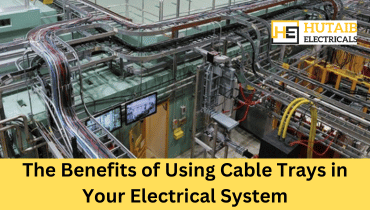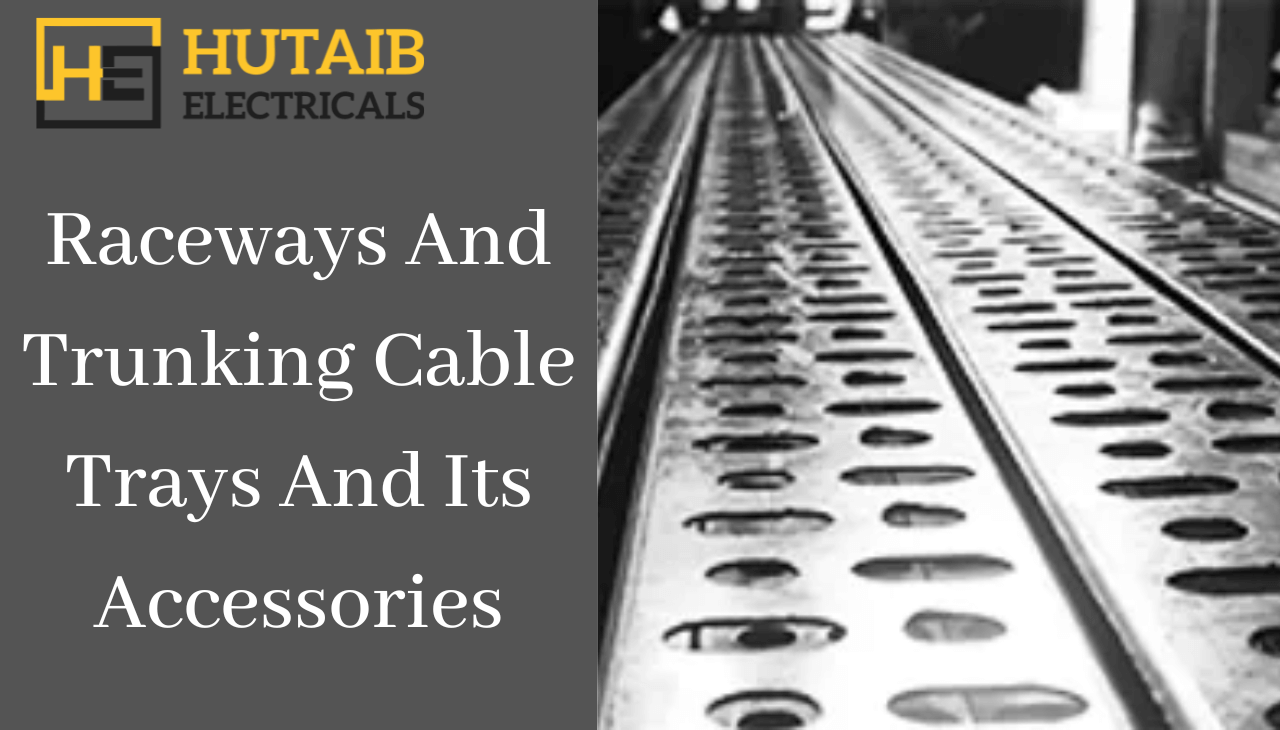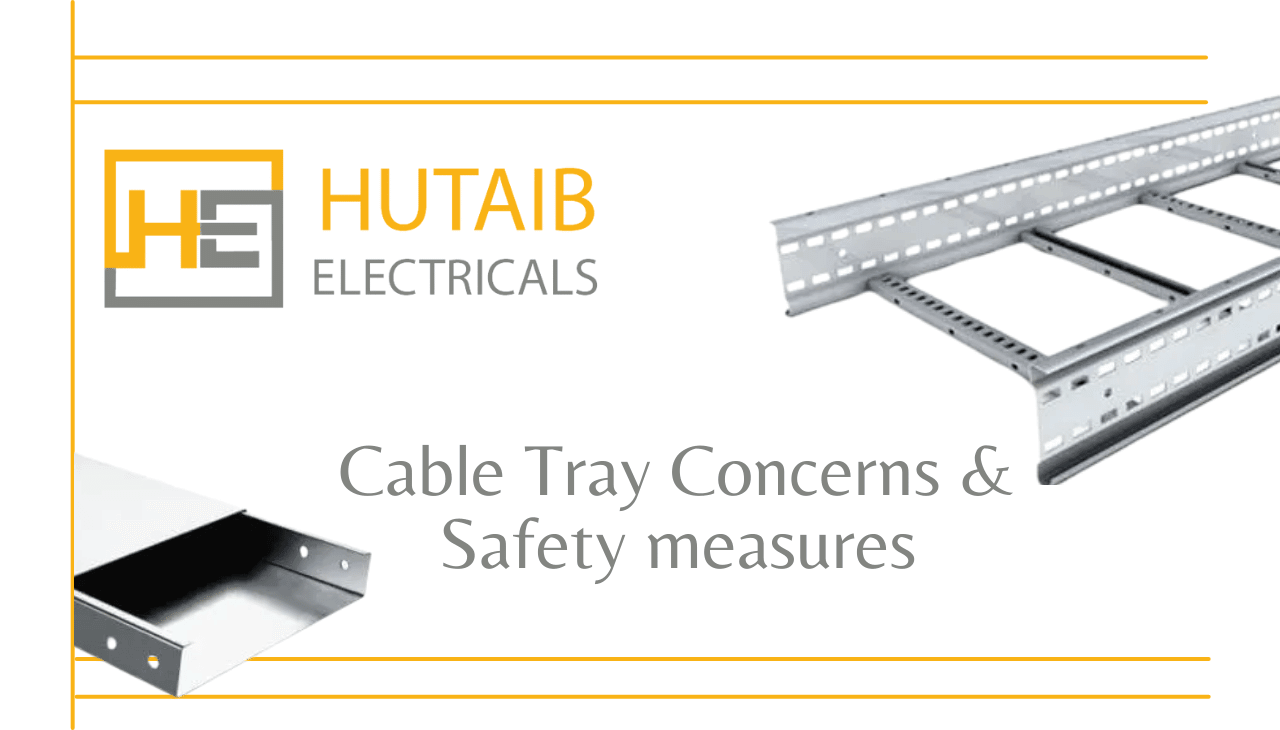Future Materials and Finishes in Cable Tray Manufacturing – What’s Next?
The world of cable tray manufacturing is rapidly evolving. As industries adopt smarter, cleaner, and more energy-efficient technologies, the demand for stronger, lighter, and more sustainable cable management systems continues to grow.
Why Choose a Basket Cable Tray? Pros & Cons
When it comes to organizing and protecting cables in commercial, industrial, or data center environments, choosing the right cable management system is crucial. Among the many options available, basket cable trays, also known as wire mesh cable trays, have become increasingly popular.
Cable Management in Smart Cities & Urban Infrastructure: The Role of Cable Trays
Smart cities are no longer a distant vision, they are rapidly becoming reality. With the rise of IoT, 5G networks, renewable energy integration, and smart grids, urban infrastructure depends heavily on efficient cable management systems.
How to Choose the Right Unistrut Cable Tray for Your Project
When it comes to managing cables safely and efficiently, Unistrut cable trays are one of the most reliable solutions. At Hutaib Electricals, we supply high-quality cable management systems designed to handle diverse industrial, commercial, and infrastructure needs
Raceways vs. Traditional Cable Trays: The Next Evolution in Cable Routing
In modern electrical installations, efficient cable management is vital for safety, performance, and aesthetics. For decades, cable trays have been the go-to solution for routing power and communication cables. But with advances in building design and stricter regulations, raceways have emerged as a superior alternative in many applications
Perforated vs. Ladder-Type Cable Trays: Which Is Right for Your Project?
When it comes to managing electrical and data cables, choosing the right cable tray system is essential. Among the most widely used options are perforated cable trays and ladder-type cable trays. Each type has its own benefits, making it important to understand their differences before making a decision.
Choosing the Right GI Lintel for Your Project: Factors to Consider
In today’s fast-paced construction industry, GI lintels (Galvanized Iron lintels) are becoming the go-to choice for builders, architects, and contractors. Unlike traditional RCC or wooden lintels, GI lintels are lightweight, corrosion-resistant, cost-effective, and quick to install. But with so many types and specifications available, how do you choose the right GI lintel for your project?
Why Ladder Type Cable Trays Are Perfect For Outdoor Projects
In the world of electrical infrastructure, cable management plays a critical role in ensuring both functionality and safety. As project sites expand outdoors—whether for industrial plants, solar farms, or telecom towers—choosing the right type of cable tray becomes more important than ever.
How To Select The Right Cable Tray Supplier For Growing Businesses
As businesses expand, their infrastructure requirements become increasingly complex—especially when it comes to managing power and communication systems.
Cable Management Solutions For Automotive Manufacturing
In the fast-paced world of automotive manufacturing, where precision and efficiency are non-negotiable, the role of cable management is more critical than ever.
Why Cable Trays Are the Backbone of Modern Pharmaceutical Manufacturing
In pharmaceutical manufacturing, precision, safety, and cleanliness are non‑negotiable. From R&D labs to cleanrooms and automated production lines, the electrical infrastructure demands reliability and rapid response.
Cable Trays: The Ultimate Solution for Industrial Cable Management and Safety
In today’s fast-paced industrial world, efficiency, safety, and organization are paramount. When it comes to electrical installations....
Seamless Solutions: How Cable Trays Enhance Industrial Workflow
In the fast-paced world of industrial manufacturing and production, efficiency is paramount. The workflow in industrial settings can be a complex process....
What is the Maximum Load for Unistrut?
Unistrut is a widely recognized brand in the construction, electrical, and industrial sectors, known for producing a range of high-quality...
What is a Cable Tray Layout and Section
In modern electrical infrastructure, ensuring the proper organization, support, and routing of cables is critical for both safety...
Wire Mesh Cable Trays Manufacturers and Suppliers:Hutaib Electricals
Wire mesh cable trays are indispensable components in modern electrical installations, offering an organized, efficient....
Reducer Cable Trays: High-Quality Cable Management Solutions by Hutaib
In the realm of electrical installations, efficient and organized cable management is a critical component for ensuring the safety...
What Are The Benefits of Using GI Lintels in Modern Infrastructure?
The present day construction industry has never faced such an urgency for everlasting and environmentally friendly building materials One such material is the Galvanised Iron (GI) Lintel..
The Importance of Horizontal Bend Basket Cable Trays in Modern Electrical Installations
Horizontal Bend Basket Cable Trays are crucial components in modern electrical installations, ensuring efficiency, safety, and adaptability in managing complex wiring systems.
How to Select the Right Raceway Cable Tray for Your Project
Selecting the right raceway cable tray is a multifaceted process, involving considerations around load capacity, environmental conditions, compliance, and flexibility...
The Role of Cable Tray Systems in Reducing Construction Costs
In the construction sector, maintaining quality and safety while controlling costs is a crucial balancing act.....
Top Benefits of Using Perforated Cable Trays in Electrical Installations
When it comes to managing electrical wiring in industrial, commercial, and residential settings, efficient cable management is key to ensuring safety.......
5 Common Questions About Solar Mounting Channels
With the recent rise in the installations of solar energy around the globe, it is a must to understand what makes a solar panel system efficient and safe.......
Benefits and Instructions for Using Cable Trays in Solar Panel Installations
In today's world, solar energy is gaining popularity as a sustainable and cost-effective alternative to existing energy sources....
5 Innovative Ways to Use Wire Mesh Cable Trays in Commercial Buildings
The wire mesh cable trays are turning out to be one of the best cable management solutions available in modern commercial buildings.....
Top 5 Benefits of Perforated Cable Trays in Industrial Applications
In a complicated industrial world, perforated cable trays form the cornerstone of effectiveness and...
How Ladder Cable Trays Improve Airflow and Cable Management
Effective cable management is both a performance and safety aspect in modern electrical installations..
Custom Cable Tray Manufacturing: Tailoring Solutions to Unique Project Needs
In the world of cable management, one size does not fit all.Custom cable tray manufacturing has become increasingly essential for addressing..
Innovative Designs for Cable Trays in Smart Cities
Smart cities are becoming living creatures of efficiency, connection, and sustainability. The element at the very heart of this change..
How Cable Tray Systems Help in Improving Workplace Safety?
The aspect of safety at the workplace is one of the most paramount concerns in every industrial or commercial working environment. Amongst the hitherto unsung yet highly...
Future Outlook Cable Tray Industry the Next Decade
The cable tray industry stands at the threshold of one of the most significant changes to hit this sector, driven by technological innovation,..
What Type of Cable is Tray Cable?
Tray cable is a versatile and durable type of electrical wiring used extensively in industrial and commercial settings. It is designed to be installed in cable trays,..
4 Types of Cable Trays That Are Useful for Warehouses
Efficient cable management is critical in warehouses, where large amounts of electrical and data cables need to be organized systematically...
When to Use Wire Mesh Cable Tray? By Hutaib Electricals
Cable management is a critical aspect of any electrical installation, whether in commercial, industrial, or residential settings...
What is a basket Cable tray used for? By Hutaib Electricals
In the realm of cable management, basket trays stand out as versatile and efficient solutions for.....
The Role of Cable Trays in Data Center Infrastructure By Hutaib Electricals
In the fast-paced world of data centers, where uptime and efficiency are paramount, the importance of a well-organized..
What are the 4 types of trunking? By Hutaib Electricals
In electrical installations, trunking plays a vital role in protecting and organizing cables..
The Importance of Proper Cable Management in Industrial Settings
In industrial settings, proper cable management is crucial for maintaining safety, efficiency, and productivity.
What is the most common type of cable tray?
In the vast landscape of electrical infrastructure, cable trays play a crucial role in organizing and supporting cables, ensuring efficient operation and safety.
Why Choose Hutaib Electricals for Your Perforated Cable Trays & Accessories?
When it comes to selecting perforated cable trays and accessories, the quality and reliability of your ......
How are horizontal bends useful for ladder cable trays?
Ladder cable trays are an essential component in electrical installations, providing a structured ......
Why Choose Hutaib Electricals for Your Perforated Cable Trays & Accessories?
When it comes to selecting perforated cable trays and accessories, the quality and reliability of your ......
Comparing Perforated Cable Trays vs. Solid Cable Trays: Which Is Right for Your Project?
When it comes to cable management solutions, choosing between perforated cable trays and......
Cable Trays vs. Conduit: Making the Right Choice for Your Electrical System
At Hutaib Electrical, we understand that choosing the right method for routing electrical cables......
Fire Safety Considerations for Cable Trays: Protecting Your Electrical System
Fire safety is paramount in any electrical system, and cable trays play......
The Environmental Impact Of Cable Trays: Building Green With Smart Infrastructure
In today's world of sustainable construction practices, every component of a......
The Cost of Cable Trays vs. Other Cable Management Solution
In the intricate world of electrical infrastructure, cable management plays a pivotal role......
GI Lintels: Types, Uses, and Installation Tips
In the realm of construction, GI lintels play a vital role in providing structural support and stability to masonry......
The Evolution of High-Tech C Channel Solutions in the Hardware Industry
In the fast-paced world of hardware manufacturing, innovation is key to staying ahead. Among the many components......
GI Lintels vs. Traditional Lintels: A Head-to-Head Comparison for Builders
In the world of construction, selecting the right materials is crucial for a building's strength......
Exploring the Evolution of Hi-Tech Channels: Past, Present, and Future
In today's digital age, the landscape of communication and connectivity has undergone a remarkable transformation.....
Benefits of Using GI Lintels for Cable Tray Installation in Industrial Settings
In the dynamic landscape of industrial infrastructure, the importance of efficient cable management cannot be overstated As businesses strive.....
Hi-Tech Channels: A Comprehensive Guide to Applications and Best Practices
In the realm of modern construction, innovative materials and techniques play a crucial role in shaping the landscape of architectural....
Unveiling Innovation: The Dynamics of Hi-Tech Channel or Slotted C Channel in Modern Construction
In the ever-evolving landscape of construction and engineering, the choice of structural components plays a pivotal role in defining the success and durability,..
From Blueprint to Reality: How GI Lintels Shape Sturdy Architectural Designs
In the intricate tapestry of architectural construction, the role of essential structural components cannot be overstated. Among these components,..
The A to Z of GI Lintels: Applications and Advantages in Construction
In the dynamic world of construction, every component plays a crucial role in ensuring the stability and longevity of a structure. One such unsun..
The Ultimate Guide to GI Lintels: What You Need to Know
In the realm of construction and architecture, every detail matters. One often-overlooked yet crucial element is the lintel..
Galvanized Guardians: The Role of GI Lintels in Construction
In the world of construction, the foundational elements often play an underestimated yet vital role in ensuring the structural integrity and durability of a building..
Navigating the Essentials: The Role of Tee Connectors in Electrical Systems
In the intricate world of electrical systems, every component plays a crucial role in ensuring seamless functionality.
Cable Tray Solutions: Streamlining Your Wiring Infrastructure
In the complex world of electrical installations, the need for a reliable and efficient wiring infrastructure cannot be overstated.Enter cable trays – a fundamental solution
Climbing to Success: Exploring the Benefits of Ladder Cable Trays
In the world of modern infrastructure and data management, the effective organization and distribution of cables and wires are paramount. Whether in industrial settings, data centers, or commercial spaces, a reliable cable management system is essential for seamless operations. Among the many solutions available, ladder cable trays stand tall as a robust and efficient choice.
The Ultimate Guide to Selecting the Right Cable Tray for Your Project
In the intricate world of modern infrastructure and electrical systems, selecting the right cable management solution is pivotal to the success of any project. Cable trays, with their ability to organize and protect cables, have become a go-to choice for various industries, from manufacturing facilities to data centers.However, choosing the right cable tray for your project is not a...
Basket Cable Trays: The Evolution of Cable Routing and Support Systems
Data centers are the backbone of our digital world, housing vast amounts of critical information and powering the online services we rely on daily. With the ever-increasing demand for data storage and processing, data centers have grown in complexity and size..
The Role of Basket Cable Trays in Data Centers
Data centers are the backbone of our digital world, housing vast amounts of critical information and powering the online services we rely on daily. With the ever-increasing demand for data storage and processing, data centers have grown in complexity and size..
The Role Of Cable Tray In Sustainable Infrastructure.
Welcome to Hutaib Electricals' blog, where we delve into the pivotal role of cable trays in promoting sustainable infrastructure. As a leading...
Unveiling the Versatility of Perforated and Solid Cable Trays: A Comprehensive Guide
Cable management is a critical aspect of any electrical or networking installation. Ensuring that cables are organized, protected, and well-ventilated is essential for maintaining system....
Fire Safety and Cable Tray Systems : What You Need to Know
When it comes to electrical installations and cable management, safety should always be the top priority....
Comparing Cable Tray Systems: Basket, Ladder, Solid Bottom, and Wire Mesh
Cable tray systems play a crucial role in safely supporting and managing cables in various industrial and commercial settings....
Cable Tray Maintenance Best Practices for Longevity
Cable trays are crucial components in modern electrical installations, ensuring the proper
Exploring the Importance of Cable Trays.
In the intricate web of modern electrical systems, where power and data flow seamlessly to fuel our daily lives,,,,
Cable Trays Market Growth
Overview:
The Cable Trays Market is anticipated to grow from its current
estimated value of USD 4.7 billion in 2022...
Understanding Cable Tray Coatings: Choosing the Best Option for Your Environment.
Welcome to Hutaib Electricals! As a leading cable tray manufacturer in India, we take pride...
Cable Tray Accessories: Enhancing Functionality and Flexibility
In the realm of efficient cable management, cable trays play a crucial role. These robust structures provide a safe and organized pathway for cables,
Future-Proofing Infrastructure: Cable Trays and the Growing Demands of Technology.
In an era where technology is advancing at a rapid pace, businesses and industries face the challenge of keeping up with the growing demands.
Beyond Wires: Creative (Ways to Utilize Cable Trays in Office Spaces)
In today's modern offices, efficient cable management is crucial for maintaining a clean and organized ...
The Role of Cable Trays in the Digital Transformation of Smart Buildings
In the era of digital transformation, smart buildings are revolutionizing the way we live and work...
Cable Tray in High-Rise Buildings: Vertical Cable Management Solutions.
In the fast-paced world of high-rise construction, efficient cable management is crucial. Vertical cable management solutions, such as basket...
Revolutionizing Cable Management: How Cable Trays Improve Workplace Safety.
In today's fast-paced and technology-driven world, proper cable management is crucial for maintaining a safe and efficient workplace environment...
The Art of Cable Tray Design by Hutaib Electricals: Balancing Aesthetics and Functionality.
As a leading cable tray manufacturer and supplier in India, Hutaib Electricals takes great pride in the artistry behind cable tray design...
Cable Trays in Outdoor Spaces: Managing Cables in Parks, Stadiums, and Public Areas.
Outdoor locations including parks, stadiums, and public spaces are rapidly outfitted with the latest technologies...
The Benefits of Cable Trays: Why They Are Essential for Organized Wiring.
In today's technologically advanced world, efficient cable management is crucial for maintaining smooth operations in various industries...
What Exactly Are Cable Trays? What Are The Different Sorts Of Cable Trays And Why Should You Use Them?
A lightweight structural electrical support device called a Cable tray protects against overheating and fire buildup issues while permitting the safe harnessing and transportation of lines and electrical flexible conduits across open spans
Enhancing Efficiency: Advancements in Cable Tray Design for High-Density Cabling.
In today's rapidly evolving technological landscape, the demand for high-density cabling solutions has surged. As industries and infrastructure projects become more digitized and data-driven, the need for efficient cable...
The Importance of Regular Cable Tray Maintenance and Inspections for Optimal Performance.
Cable trays are an essential component of electrical infrastructure systems. They support and protect cables, ensuring that they are organized and secure. However, over time, cable trays can become damaged, corroded, or otherwise...
Cable Trays To Improve The Fire Safety Of Your Building - Hutaib Electricals
Hutaib Electricals is a leading cable tray manufacturer in India, providing high-quality cable management solutions to various industries Cable trays are an essential component of any building's electrical system,...
5 Reasons Why Cable Trays are Essential for Modern Industrial Facilities
As the world continues to rely on technological advancements, modern industrial facilities have become increasingly complex. With the rise of automation, Internet of Things (IoT), and other innovations, industrial facilities are processing vast amounts of data and electricity.
Maximizing Space Efficiency with Cable Tray Systems
Cable tray systems are an essential component of any electrical installation, providing a safe and efficient way to manage and support power and data cables. In addition to their functional benefits, cable trays can also help maximize space efficiency in a variety of settings, from commercial buildings to industrial plants.
The Benefits of Using Cable Trays in Your Electrical System
Cable management is a critical component that must be handled seriously when designing and installing electrical systems. All electrical systems need cable trays, which are a crucial element and a preferred option for many installers due to their many advantages. The advantages of employing cable trays
Why Stainless Steel Cable Trays Are Ideal for Harsh Environments
In several sectors, cable trays play a crucial role in cable protection and organization. But not all cable trays are made equal, and making the appropriate one is essential to guaranteeing the..
Common misconceptions about cable trays debunked
In industrial environments, cables and wires are supported and protected by cable trays, which are a common component.
Top Cable Tray Manufacturer Company In Dubai/UAE
Cable trays are an essential component of any electrical system as they provide a safe and efficient way to manage and protect cables.
Top 10 Cable Tray Manufacturing companies
Cable trays are essential components in the electrical industry that offer a safe and efficient way to manage and protect power cables. These trays come in various materials, sizes, and designs, and are used in a wide range of applications, from residential to commercial and industrial settings. With so many cable tray manufacturing companies in the market, choosing the right one can be a daunting task, but not when there is Hutaib Electricals in the list.
The Role of Cable Trays in Data Centers and Server Rooms
In order to support the numerous data cables, fiber patch cords, power cords, and network devices needed to run the network effectively, whether in a commercial installation or a data center with rows of server racks and network cabinets, extensive and well-planned cable management is essential.
High Quality Cable Trays Exporter In Nepal
Hutaib Electricals, based in Nepal, is a leading exporter of cable trays to various countries worldwide. Cable trays are essential components in cable management systems that provide support and protection to electrical cables and wires.
Solid Bottom Cable Tray And Its Benefits
Solid-bottom Cable Trays Solid-bottom cable trays are chosen for fiber-optic cable installations where cable drooping could impair system performance.
Raceways, Trunking Cable Trays And Its Accessories
A raceway is an enclosed conduit that creates a physical channel for electrical wires, also known as a raceway system.
Exporter Of Cable Trays In Bangladesh
Bangladesh is a rapidly developing country with a strong focus on industrialization and infrastructure development.
Leading Cable Tray Exporter In Africa
In addition to producing a wide variety of cable trays, Hutaib Electricals also manufactures accessories
What Are Accessories For Cable Trays? What Purpose Does Each Serve?
In actuality, when the cable tray accessories are finished, the cable tray is fully functional.
Various Raceway Types - Hutaib Electricals
A raceway is a crucial element in the structure and design of many electrical systems, including blade servers and sophisticated data centers.
What Maintains Cable Tray System`s Relevance
A cable tray is a crucial component to include in any wire setup. You may efficiently organize, support, and move your cables by installing a cable tray.
Types of Accessories Used In Perforated Cable Tray
Any building construction must feature three significant design achievements. It includes civil, mechanical, and electrical works. There are a few considerations to be made while wiring inside the boundaries of
Various Types Of Cable Trays And Their Advantages
Cable trays are used to provide mechanical protection in areas with a high concentration of power control cables. Manufacturers of cable trays create these to provide mechanical protection as well as a proper routing path for
How to protect your cables with Cable Trays
You need to plan for your cable management whether you're working with your data center server cabinet, industrial generator parts, or manufacturing any units. These factors and the function of various solutions will be discussed
What are Basket Cables
Cable tray baskets are a type of cable containment constructed of steel wires that have been welded together to create a wire mesh that resembles a basket.
Uses Of Unistrut Cable Trays In Different Places
Virtually all of our application-based adaptability built into each segment of Hutaib Unistrut makes our channel perfect for so-called non-traditional applications as well.
Cable Tray Concerns and Safety measures
The cable tray for industry is an essential component of daily living since it is an intelligent weak current system
Why Are Cable Trays Used for Electric Wires
Cable trays are a solid structural system made consisting of a single unit or a group of them along with the necessary fasteners
Leading cable tray manufacturer in india
A recent study predicts that the India Cable Tray Market will expand at a CAGR of about 8% until 2024. The segments of construction and power utilities have held the
CABLE TRAYS FOR PROPER SECTORIZATION IN BUILDINGS
You will find in this post a small guide of the alternatives to carry out a correct sectorization to the fire. In particular , we'll be focused on the electrical trays since electricity is a key factor that must be sealed in the passage
Why Cable Trays Are Better Than Conduit Systems?
We all must have seen, and heard that Cable Trays are better than conduit systems, but the question now here is why? Hutaib Electricals is one of the best Cable Tray Manufacturers In Pune India.
Hutaib Electricals is the “Best Manufacturers of Cable Trays in India.”- Trade India
You are all aware that India is a developing nation that is experiencing rapid development and expansion in many different fields. India has undergone many changes
Choosing the right cable management tray
Cable trays are elements of support systems for power and communications cables and wires. A cable receptacle system supports and protects each power and signal cable and facilitates upgrading, expanding re-configuring, or relocating networks.
Use A Cable Tray For Avoiding Electrical & Fire Damages On Cables
Cable trays square measure mechanical support systems that offer a rigid structural system for electrical cables, raceways, and insulated conductors used for electrical power distribution, control, signal instrumentation, and communication.
Cable Tray Market Size, Share & Industry Analysis Forecast 2019 - 2026
Cable Trays are a safe and doable result for supporting conditions of electric power, signal, control, instrumentation, and communication lines.
Why is the Ladder Cable Tray a great option for managing cables?
Every customer praises our ladder cable tray because it consistently consists of a sturdy frame and durable wire material. It is often the most durable kind of steel cable support.
Cable Tray: Safety Precautions And Maintenance
If not correctly planned and installed, wiring inside cable trays can cause fires, electric shock, and arc-flash blast events. Cable trays can be used to support, route, protect, and provide a passage for cable systems as part of a planned cable management system. Cable trays can be utilized with power, low voltage
The Walkable Cable Tray System For Effective Supply Cable Protection
The ambient conditions in modern industrial plants pose a significant threat to important power, data, and control cables. A harsh environment is created by soiling, vibrations, and industrial effects. As a result, it's even more critical for machine and plant electrical installations to be able to resist varying loads.
Merging Tray Cable with Automobile Technology
Cable trays are a popular alternative to conduits for transporting and protecting cables in industrial settings. They're easier to install and maintain than conduits, but there's one catch: the cable you install ina cable tray has to be a tray cable.What does this mean?
Cost is a critical challenge for cable tray companies
Cable Tray has always been at the forefront in introducing products which would be beneficial to its clients. Rather than using the conventional system of shearing the sheet , punching and later bending, we've decided for new techniques .
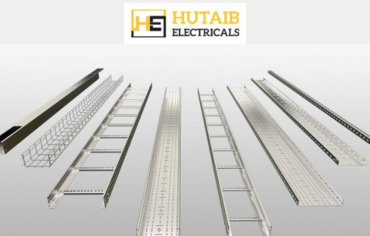
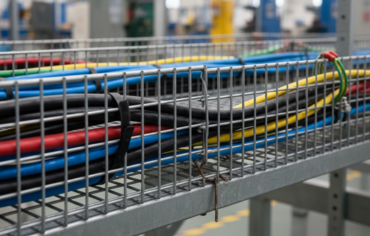
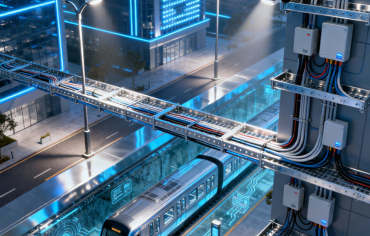
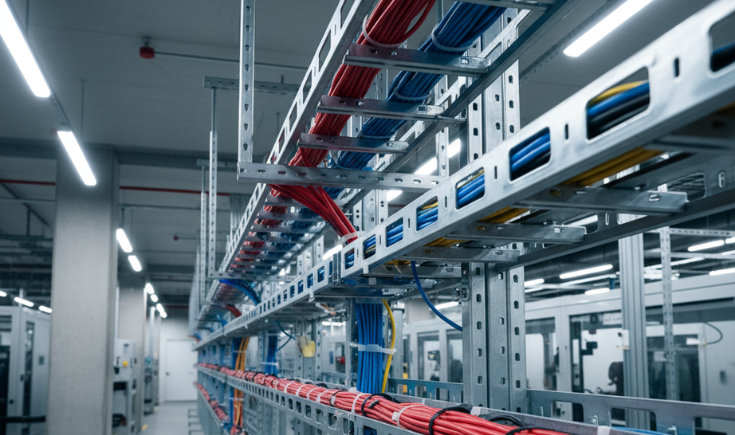

.png)
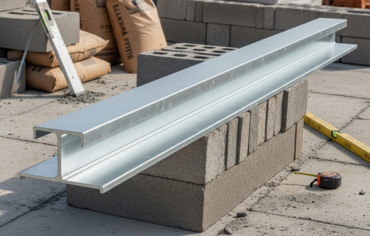
.png)
.png)
.png)
.png)












.png)







.png)




.png)



























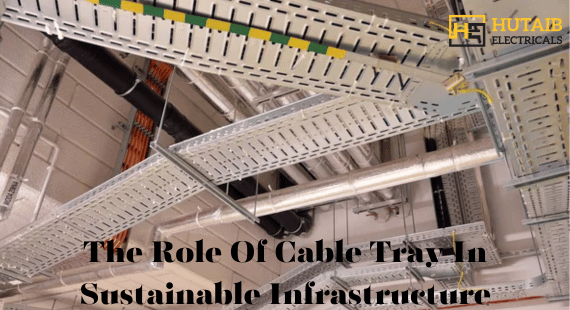














.png)







